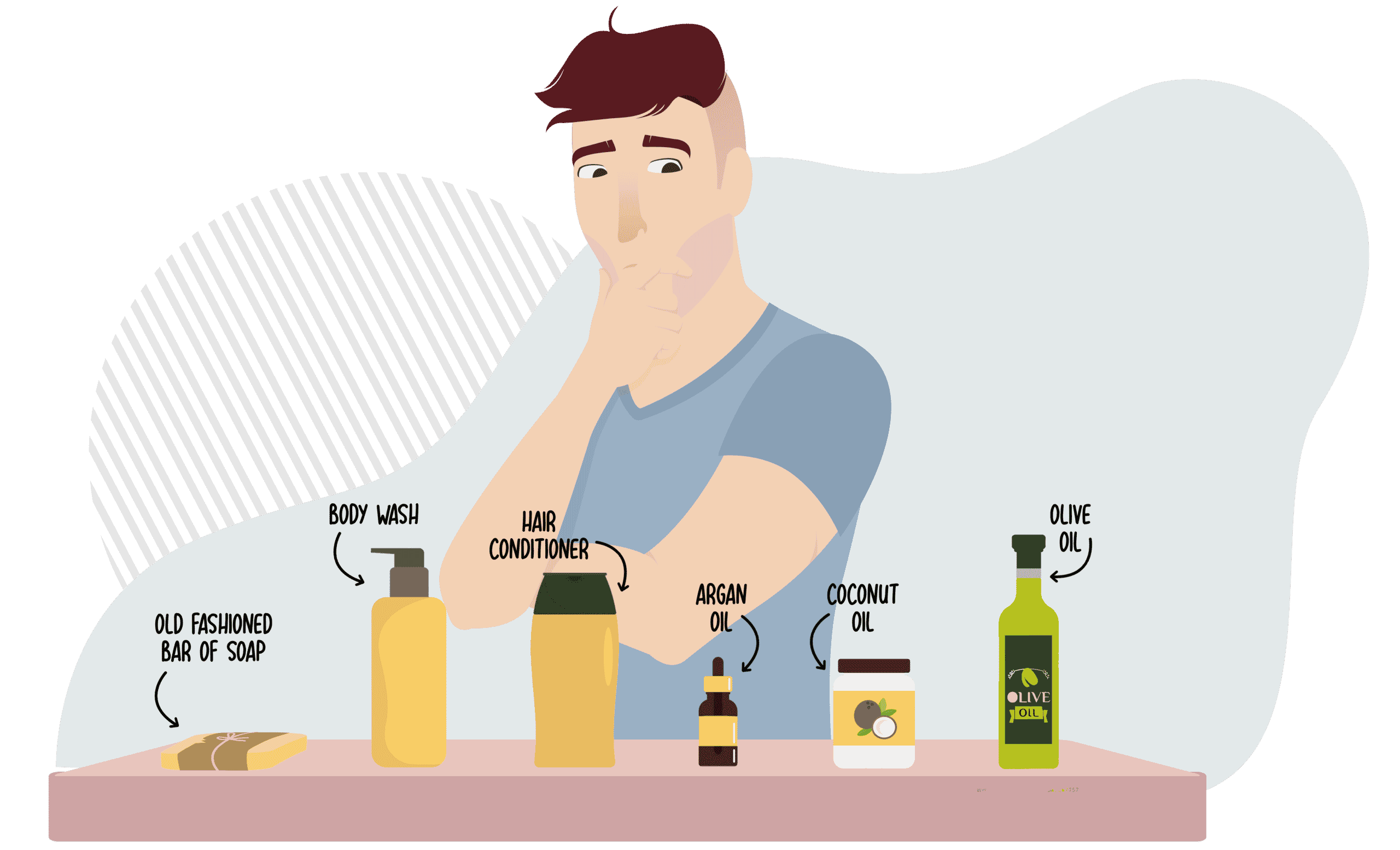Shaving without shaving cream or gel raises the likelihood of cuts and irritation, but there are household substitutes you can use, such as aloe vera gel or hair conditioner.
Shaving cream is a toiletry formulated to soften and lubricate hair, making shaving easier. When applied to skin, it foams to create a protective, moisturizing layer between the razor and your skin.
This layer helps reduce the chance of nicks and cuts from the razor and limits scraping and harm to your skin. Shaving cream also aids in achieving a closer shave.
But what if you need to shave and don’t have shaving cream on hand? If you’re in that situation, there are several common alternatives you can try. In a pinch, it’s even possible to shave carefully without any lubricant at all.
Below we’ll explain what can happen when you shave without shaving cream and outline safe steps to take when you lack it.

Risks and side effects of shaving without shaving cream
When using a disposable or safety razor, you’re dragging a sharp edge across sensitive skin. This can be done safely, but dry-shaving carries particular risks and side effects.
Nicks and cuts
Shaving without a lubricant (known as dry-shaving) may increase your chance of sustaining shaving injuries. Without the protective layer that shaving cream provides, your skin is more exposed during shaving.
Razor burn
Dry-shaving can strip away surface skin cells even if you don’t see cuts. This may lead to razor burn, redness, and itchy bumps after shaving.
Razor bumps
Skipping shaving cream can contribute to razor bumps and ingrown hairs, also called pseudofolliculitis barbae. Razor bumps may be itchy, filled with pus, and can become infected.
Alternatives to shaving cream or gel
If you don’t have shaving cream available, several substitutes can be used. People who react to conventional shaving products will be glad to know there are other safe choices.
Keep in mind that shower gels or bar soaps can leave a film on your skin that makes it slippery, which may dull your razor blade since they often don’t rinse away easily. That can increase the chance of cutting yourself.
Safer alternatives to traditional shaving cream include:
- hair conditioner or rinse
- cream-based body lotion
- aloe vera gel
Can you shave with just water?
If you have no alternatives at all, you can shave using only water.
Steaming up your bathroom with a hot shower helps open pores and hair follicles. Before shaving, switch to warm (not scalding) water and shave cautiously.
Finish the shower with a blast of cooler water to help seal moisture in, and apply lotion after towel-drying if one is available.
How to shave without shaving cream
You shouldn’t routinely shave without shaving cream because of the associated risks, but sometimes circumstances leave you no choice.
The main principle when shaving without shaving cream is to be gentler on your skin than you would normally be.
- If you don’t have shaving cream but you have a brand-new razor, use it. A fresh blade or cartridge is less likely to spread bacteria if you nick yourself.
- Avoid pressing hard against dry skin; shave in the direction of hair growth (even though shaving against the grain may yield a slightly closer result).
- Use warm water or steam from a shower to soften hair and open follicles before shaving.
- Keep a warm washcloth on the area you’re shaving to maintain moisture while you shave. If you can use a steady stream of warm water from the showerhead, even better.
- Don’t multitask — focus on shaving to reduce the risk of injury.
- When you’re out of shaving cream, it’s not the ideal time for a full-body shave. Limit trimming to visible patches of hair or areas that really need it.
- If you must shave sensitive zones like the underarms, bikini line, or pubic area without shaving cream, be aware that your shave won’t be very close and the risk of razor bumps or ingrown hairs is higher. Choose accordingly.
Post-shave care
After dry-shaving or shaving with only water, take measures to soothe and protect your skin to reduce side effects.
- Restore a moisture barrier by applying aloe vera, shea butter, coconut oil, or your preferred lotion.
- If available, apply your usual aftershave.
- Treat any nicks or cuts with a healing ointment such as bacitracin or neomycin (Neosporin) and cover with a protective bandage.
- For future shaves, make sure you have shaving cream on hand before you start.
Takeaway
Shaving without shaving cream isn’t ideal, but it can be done safely if necessary.
By following sensible precautions, being gentle with your skin, and caring for it after shaving, you can manage the situation. Still, try to keep shaving cream available for the next time.


















Leave a Reply
You must be logged in to post a comment.